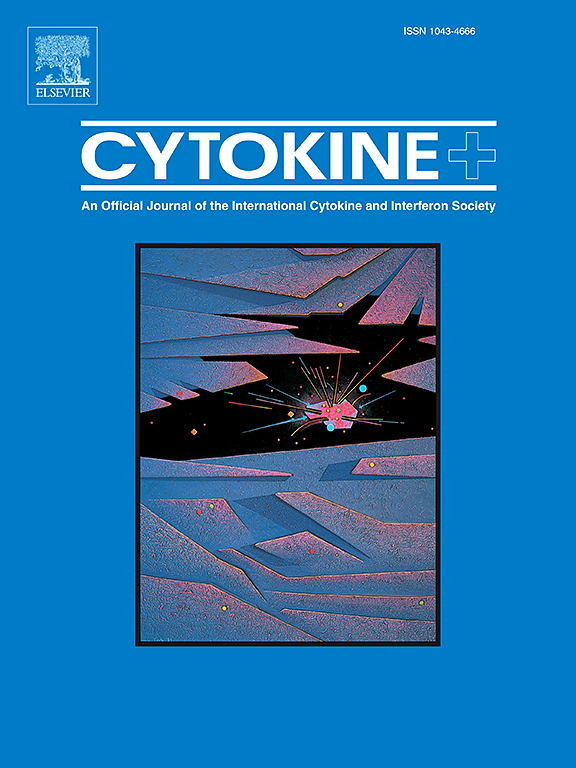Inflammatory cytokine profile in non-small cell lung Cancer (NSCLC) patients during early enhanced recovery after surgery (ERAS) period and its relation to hospital length of stay
IF 3.7
3区 医学
Q2 BIOCHEMISTRY & MOLECULAR BIOLOGY
引用次数: 0
Abstract
Purpose
Immunoregulatory cytokines may play a fundamental role in tumor growth and the acute surgical stress response. Inflammatory cytokine profiles have the potential to serve as biomarkers. This study aimed to correlate tumor- or surgery-related inflammatory cytokine profile, derived from data mining, with clinical data and the hospital length of stay for non-small cell lung cancer (NSCLC) patients during the early enhanced recovery after surgery (ERAS) period.
Methods
A multi-phase detection approach was used, involving pre- and post-operative NSCLC patients and matched healthy controls. In the screening phase, plasma levels of 48 cytokines were quantified using a Luminex multiplex bead array to identify tumor- or surgery-related cytokine profiles. In the confirmation phase, differentially expressed cytokines were validated using ELISA with a new set of samples. Tumor-related cytokines were identified by comparing preoperative NSCLC patients with controls, while tumor or surgery-related cytokines were determined by comparing with the same cohort before and after surgery, as well as postoperative patients with controls. We then searched cancer genomics databases and protein atlas resources to investigate cytokine-related RNA expression and RNA-protein interactions. Finally, we integrated and standardized our results, conducting correlation analysis to explore relationships between cytokines, hospital length of stay, and clinical data.
Results
During the initial phase of the ERAS, a comprehensive array of differential cytokines associated with tumors or surgery, including Eotaxin, IL-1β, IL-1Ra, IL-6, IL-13, IL-16, IP-10, MCP-1, PDGF-BB, RANTES, SCF, and TRAIL, were identified. Preoperative levels of RANTES, urea nitrogen, prognostic-nutritional index, and age may serve as potential indicators for predicting hospital length of stay.
Conclusion
The multi-phase detection analysis has identified a plasma cytokine signature for NSCLC patients during the early ERAS period. Assessment of cytokine profiles and clinical data may reveal unique insights into short-term survival outcome under ERAS.

非小细胞肺癌(NSCLC)患者术后早期增强恢复(ERAS)期炎症细胞因子谱及其与住院时间的关系
目的免疫调节细胞因子可能在肿瘤生长和急性手术应激反应中起重要作用。炎症细胞因子谱具有作为生物标志物的潜力。本研究旨在将数据挖掘得出的与肿瘤或手术相关的炎症细胞因子谱与非小细胞肺癌(NSCLC)患者在术后早期增强恢复(ERAS)期间的临床数据和住院时间联系起来。方法采用多期检测方法,纳入非小细胞肺癌术前和术后患者及匹配的健康对照。在筛选阶段,48种细胞因子的血浆水平使用Luminex多重头阵列进行量化,以确定与肿瘤或手术相关的细胞因子谱。在确认阶段,用ELISA对一组新样品验证差异表达的细胞因子。通过比较术前NSCLC患者与对照组来确定肿瘤相关细胞因子,而通过比较手术前后以及术后患者与对照组来确定肿瘤或手术相关细胞因子。然后,我们检索了癌症基因组数据库和蛋白质图谱资源,以研究细胞因子相关RNA表达和RNA-蛋白质相互作用。最后,我们对我们的结果进行整合和标准化,进行相关分析,以探索细胞因子、住院时间和临床数据之间的关系。在ERAS的初始阶段,发现了一系列与肿瘤或手术相关的差异细胞因子,包括Eotaxin、IL-1β、IL-1Ra、IL-6、IL-13、IL-16、IP-10、MCP-1、PDGF-BB、RANTES、SCF和TRAIL。术前RANTES水平、尿素氮、预后营养指数和年龄可作为预测住院时间的潜在指标。结论多阶段检测分析确定了早期ERAS期NSCLC患者的血浆细胞因子特征。细胞因子谱和临床数据的评估可能会揭示ERAS短期生存结果的独特见解。
本文章由计算机程序翻译,如有差异,请以英文原文为准。
求助全文
约1分钟内获得全文
求助全文
来源期刊

Cytokine
医学-免疫学
CiteScore
7.60
自引率
2.60%
发文量
262
审稿时长
48 days
期刊介绍:
The journal Cytokine has an open access mirror journal Cytokine: X, sharing the same aims and scope, editorial team, submission system and rigorous peer review.
* Devoted exclusively to the study of the molecular biology, genetics, biochemistry, immunology, genome-wide association studies, pathobiology, diagnostic and clinical applications of all known interleukins, hematopoietic factors, growth factors, cytotoxins, interferons, new cytokines, and chemokines, Cytokine provides comprehensive coverage of cytokines and their mechanisms of actions, 12 times a year by publishing original high quality refereed scientific papers from prominent investigators in both the academic and industrial sectors.
We will publish 3 major types of manuscripts:
1) Original manuscripts describing research results.
2) Basic and clinical reviews describing cytokine actions and regulation.
3) Short commentaries/perspectives on recently published aspects of cytokines, pathogenesis and clinical results.
 求助内容:
求助内容: 应助结果提醒方式:
应助结果提醒方式:


